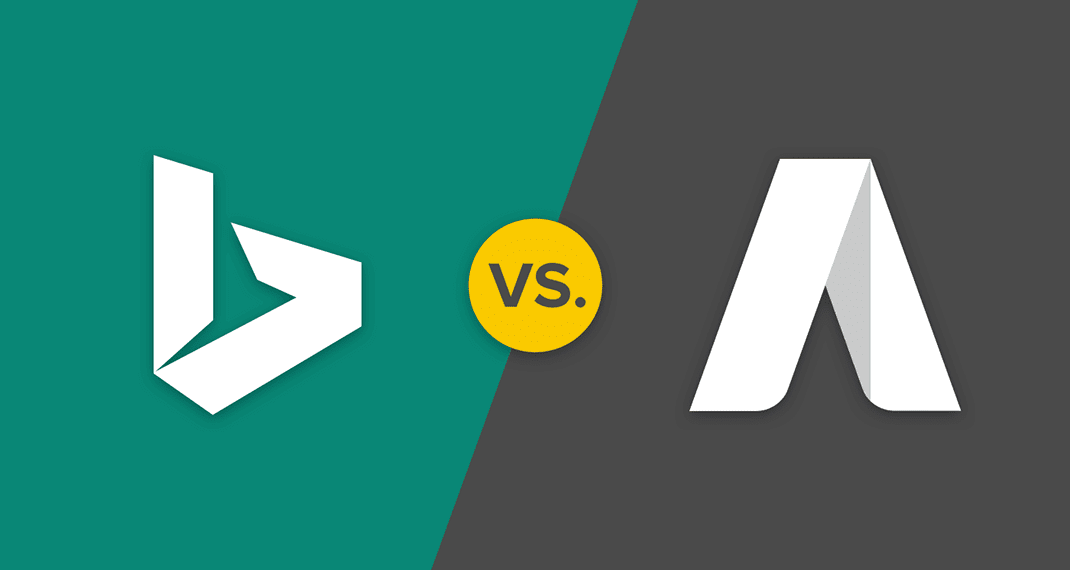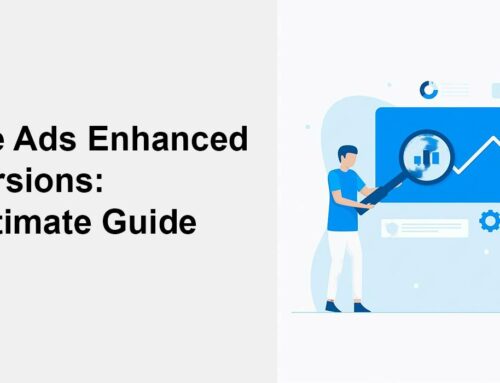
In the dynamic world of pay-per-click (PPC) advertising, the prominence of Google Ads often overshadows other players like Microsoft Ads (formerly Bing Ads). This comparative analysis aims to shed light on both platforms, considering the recent integration of Bing Chat with OpenAI’s GPT-4, which has garnered attention in the digital marketing sphere. Here, we delve into the nuances of each platform, exploring their similarities and differences in reaching key audiences, driving revenue, and boosting traffic through targeted search ads.
Comparative Overview
Both Google Ads and Microsoft Ads share common goals and features, such as URL displays under ad headlines and a uniform character limit for descriptions. They offer broad match keywords, keyword research tools, and negative keyword targeting. However, a deeper examination reveals distinct characteristics unique to each platform.
Google Ads: The Market Leader
Google Ads, formerly known as Google AdWords, is a comprehensive and versatile platform in the digital advertising realm. Its strengths lie in a multifaceted approach to ad campaigns, robust targeting options, extensive market reach, and global accessibility. Here’s an in-depth look at its defining features:
1. Dual-Layer Approach: Search and Display Networks
- Search Network Campaigns: This facet of Google Ads allows businesses to place ads directly on Google’s search engine results pages (SERPs). When users search for specific keywords related to your product or service, your ad can appear above or beside the search results, giving immediate visibility to your target audience. This direct approach is highly effective for capturing user intent at the moment of search.
- Display Network Campaigns: Google’s Display Network extends advertising reach beyond the search engine, encompassing over two million websites, videos, and apps. This network allows businesses to display ads in various formats (like banner ads) across a vast array of websites. This exposure is excellent for building brand awareness and retargeting, reaching users as they browse online, watch YouTube videos, or use mobile apps.
2. Advanced Keyword Targeting Options
- Exact Match: This targeting option allows ads to show only when someone searches for the exact keyword or a very close variant of it. This precision is crucial for targeting specific user queries and reducing irrelevant traffic, thus increasing the likelihood of conversions.
- Broad Match: The broad match option displays your ad for a wide range of searches related to your keyword, including synonyms, related searches, and other variations. This maximises reach but requires careful monitoring to ensure relevance.
- Broad Match Modifiers: These modifiers offer a balance between the specificity of exact matches and the reach of broad matches. By adding a ‘+’ sign before keywords, you tell Google Ads that certain words must be in the user’s search query for the ad to show. This provides more control over who sees your ad.
- Phrase Match: Phrase match targeting ensures your ads appear for searches that include the meaning of your keyword. This option offers more flexibility than exact match while still providing control over who sees your ad, making it effective for targeting phrases and specific queries.
3. Market Share and Competitive Arena
- Dominance in the Digital Space: Google Ads operates within the largest search engine in the world, offering access to an extensive user base. This dominance means a higher potential for ad visibility and reach.
- Competitive Edge: The vast market share also translates into a more competitive advertising environment. Businesses often face higher bid prices in popular categories, necessitating strategic bidding and comprehensive keyword research to stand out.
Types of Google Ads
Google Ads offers diverse PPC ad types, including:
- Expanded Text Ads: These longer ads feature up to three headlines and two descriptions, enhancing product/service information.
- Responsive Ads: Google optimises a combination of provided headlines and descriptions to match user queries.
- Dynamic Search Ads: Ideal for large inventories, these ads are automatically generated based on website content.
- Call-Only Ads: Focused on encouraging customer calls with a direct call-to-action.
- Shopping Ads: Featuring product images, descriptions, and prices, these ads are tailored for product sales.
Microsoft Ads: A Diverse Reach
While similar in many respects to Google Ads, Microsoft Advertising stands out with its reach across Bing, AOL, and Yahoo, along with partner sites like MSN.com. Key features include:
1. Extensive Network Coverage
- Multi-Platform Visibility: Microsoft Ads distinguishes itself with its extensive reach across various platforms, namely Bing, AOL, Yahoo, and partner sites like MSN.com. This coverage offers a unique advantage, as it allows advertisers to tap into diverse user bases across these platforms, each with its own distinct demographic and user behavior patterns.
- Bing’s Growing Influence: Bing, being the second largest search engine after Google, holds a significant share in certain markets and demographics, providing a valuable alternative audience that might not be as heavily targeted as those on Google.
- Partner Network Strength: The inclusion of AOL, Yahoo, and MSN.com expands the reach of Microsoft Ads beyond just a search engine platform. It enables advertisers to connect with audiences across different content types and interests, potentially increasing the effectiveness of ad campaigns.
2. Specialized Mobile Search Ads
- Mobile-First Approach: With the increasing use of mobile devices for internet browsing and search, Microsoft Ads offers specialized mobile search ads. These ads are optimized for the mobile experience, ensuring better visibility and engagement with users on smartphones and tablets.
- Customization for Mobile Users: Advertisers have the flexibility to customize their campaigns specifically for mobile users, including adjustments in ad copy, layout, and call-to-action, tailored to the mobile browsing experience.
3. LinkedIn Profile Targeting
- B2B Marketing Edge: A standout feature of Microsoft Ads is its integration with LinkedIn, which allows advertisers to target audiences based on LinkedIn profiles. This is especially beneficial for B2B marketing, as advertisers can target potential customers based on industry, company size, job function, and seniority.
- Precision Targeting: This capability enables advertisers to create highly focused campaigns that are more likely to reach decision-makers and professionals within specific industries, leading to potentially higher conversion rates in B2B scenarios.
4. Ad Diversity Across Budgets and Platforms
- Flexibility in Campaign Management: Microsoft Ads is known for its flexibility in accommodating a wide range of ad budgets, making it accessible for small businesses and large enterprises alike. This flexibility allows for a more inclusive range of advertisers to participate in digital marketing.
- Variety of Ad Types: Like Google Ads, Microsoft Ads offers various types of ads, including text ads, shopping ads, and display ads, each with its own set of features and benefits. This variety ensures that advertisers can choose the type of ad that best suits their campaign goals and target audience.
- Cross-Platform Integration: Microsoft’s advertising solutions are designed to work seamlessly across different platforms and devices, enhancing the reach and impact of campaigns. This integration is crucial in today’s multi-device world, where consumers switch between desktop, mobile, and tablet devices.
Types of Microsoft Ads
Microsoft Ads also offer a variety of options, such as:
- Expanded Text Ads: Similar to Google, with multiple headlines and descriptions.
- Dynamic Search Ads: Based on website content for relevant ad generation.
- Bing Smart Search Ads: Designed for Windows 8.1 Smart Search with a landing page preview.
- Responsive Search Ads: A mix-and-match approach for effectiveness.
- Product Ads/Shopping Ads: Visually focused ads showcasing products.
Demographics and Global Popularity
Understanding the audience demographics is crucial for both platforms. Google’s user base skews younger, tech-savvy, and more likely to engage with white-collar industries. In contrast, Microsoft’s audience tends to be older, blue-collar, and with higher purchasing power, predominantly in the U.S.
Globally, Google dominates with an expansive reach, while Microsoft’s Bing sees popularity in regions like Japan, Mexico, and the UK.
Choosing the Right Platform
When selecting the best platform for your clients, consider:
- Reach: Google’s extensive user base versus Bing’s growing, yet significant, market share.
- Ease of Use: Google’s complexity against Microsoft’s user-friendly interface.
- Cost Efficiency: Microsoft’s typically lower CPC compared to Google.
- Conversion and Revenue: Weighing Microsoft’s demographic advantages against Google’s higher search volumes.
Pros and Cons
Google Ads offers a vast reach and detailed targeting options but may be challenging for beginners and more expensive due to high competition. Microsoft Ads are more affordable with a potentially higher quality of traffic but have a smaller market share and limited language options.
Google Ads: Pros and Cons
Pros:
- Vast Reach: Google Ads operates on the world’s largest search engine, offering unparalleled reach. This expansive presence is crucial for businesses aiming to maximize visibility and attract a diverse audience.
- Detailed Targeting Options: The platform provides sophisticated targeting options, including demographics, interests, search behaviors, and more. This allows for highly tailored campaigns that can effectively reach the intended audience.
- Diverse Ad Formats: Google Ads offers a variety of ad formats like text, image, video, and shopping ads, catering to different campaign goals and audience preferences.
Cons:
- Complexity for Beginners: Due to its comprehensive nature and multitude of features, Google Ads can be overwhelming for beginners. The learning curve can be steep, requiring time and effort to master.
- Cost: The platform’s popularity and high competition can drive up the cost. This is particularly true in highly competitive industries where bidding for keywords can be expensive.
- Highly Competitive: The vast number of advertisers vying for attention can make it challenging to stand out, especially for smaller businesses with limited budgets.
Microsoft Ads: Pros and Cons
Pros:
- Affordability: Generally, Microsoft Ads offer lower cost-per-click rates due to less competition. This can be a more budget-friendly option, especially for small to medium-sized businesses or those in niche markets.
- Quality of Traffic: Studies and anecdotal evidence suggest that the traffic quality from Microsoft Ads can be higher, with better conversion rates in some industries. This is attributed to the unique demographics of users on platforms like Bing.
- Integration with LinkedIn: For B2B marketers, the ability to target based on LinkedIn data (like job titles and industries) is a significant advantage, offering precise targeting not available on Google.
Cons:
- Smaller Market Share: While growing, Bing and other Microsoft platforms have a smaller user base compared to Google. This limits the overall reach of campaigns, which can be a drawback for businesses looking to maximize exposure.
- Limited Language Options: With support for fewer languages than Google, Microsoft Ads might not be the best fit for global campaigns targeting a multilingual audience.
- Less Advanced in Some Features: Microsoft Ads may lag behind Google in certain technological advancements and features, which can affect campaign performance and management efficiency.
Making an Informed Decision
For many businesses, a combined approach leveraging both Google Ads and Microsoft Ads could optimise reach and effectiveness.
Conclusion: Enhancing Your PPC Campaigns
This analysis provides a comprehensive view of Google Ads and Microsoft Ads, helping entrepreneurs, marketing directors, and managers make informed decisions. By understanding each platform’s unique strengths and audience demographics, you can tailor your PPC strategies to maximise reach, conversions, and return on investment.



